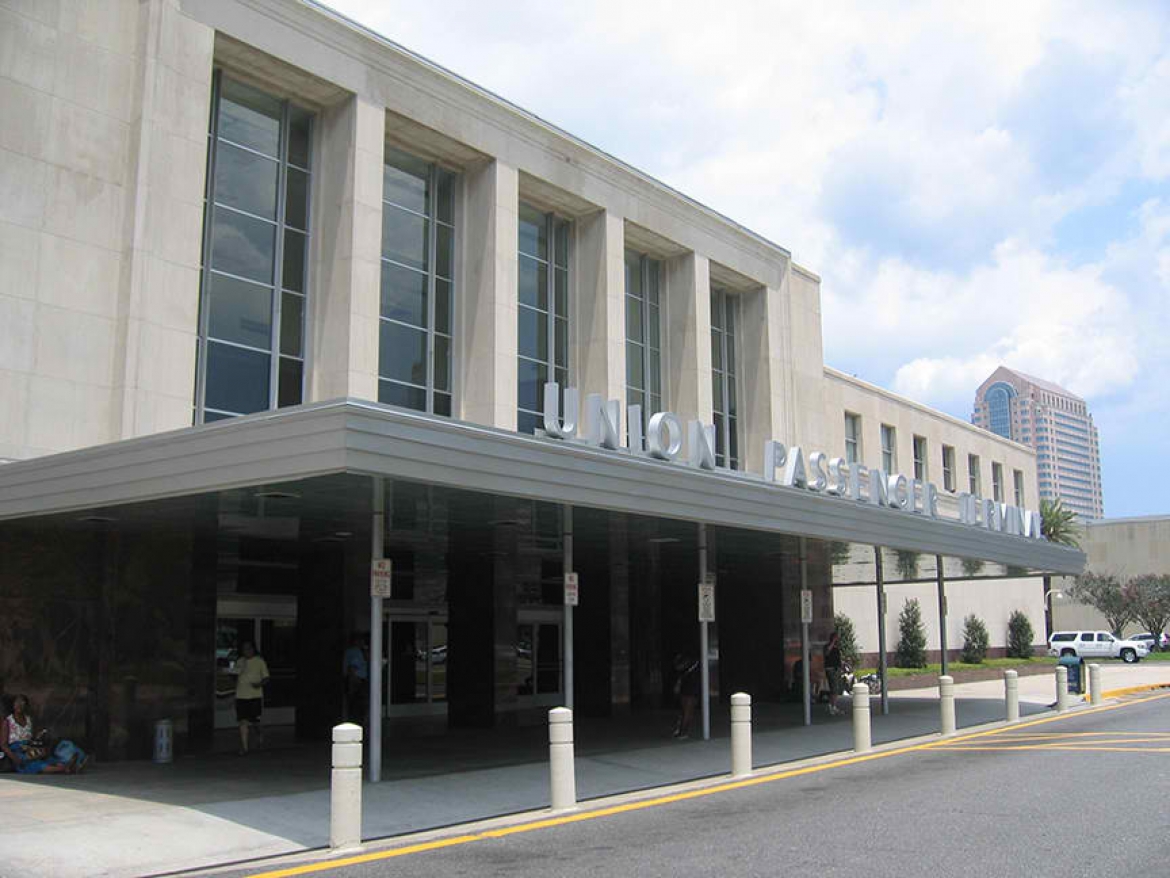
New Orleans Union Passenger Terminal Station
Restoring an icon of the modern era of transportation in New Orleans
The New Orleans Union Passenger Terminal (NOUPT) first opened its doors in 1954, ushering New Orleans into the era of modern transportation. It is a jewel of modernist post-war design, filled with historic murals and exquisite materials. As passenger ridership for the Amtrak and Greyhound services rose, the terminal required renovations to accommodate the demands.
The New Orleans Building Corporation (NOBC) hired Manning in 1992 to restore and expand the terminal. The sensitive restoration maintained the unique historic qualities of the building. Updates included new Americans with Disabilities Act (ADA) compliant entrances and restrooms, new operator offices, and newly restored entrance canopies and murals, which return the luster to the grand travel experience.
Again in 2010, the NOBC turned to Manning. The modernist glass, limestone, and granite panels of the pre-war icon were showing signs of wear. To prolong the life of the terminal and provide much-needed maintenance, Manning undertook the restoration of the exterior skin, beginning with the development of a comprehensive survey of the exterior wall panels and canopy roofing. Upon fully documenting the existing conditions and studying the original drawings, Manning worked with the client, historical restoration experts, and contractors to compile a comprehensive plan and documents that addressed damage, deterioration, and water infiltration.
Working closely with all parties through the construction, the project was completed earlier than scheduled and without exceeding the construction budget. There were no interruptions in services to passengers, public access, or damage to the adjacent interior elements. These efforts resulted in repairs that upheld the character of the building, including seamless detailing which maintained the original thin lines of the canopies.
The New Orleans Building Corporation (NOBC) hired Manning in 1992 to restore and expand the terminal. The sensitive restoration maintained the unique historic qualities of the building. Updates included new Americans with Disabilities Act (ADA) compliant entrances and restrooms, new operator offices, and newly restored entrance canopies and murals, which return the luster to the grand travel experience.
Again in 2010, the NOBC turned to Manning. The modernist glass, limestone, and granite panels of the pre-war icon were showing signs of wear. To prolong the life of the terminal and provide much-needed maintenance, Manning undertook the restoration of the exterior skin, beginning with the development of a comprehensive survey of the exterior wall panels and canopy roofing. Upon fully documenting the existing conditions and studying the original drawings, Manning worked with the client, historical restoration experts, and contractors to compile a comprehensive plan and documents that addressed damage, deterioration, and water infiltration.
Working closely with all parties through the construction, the project was completed earlier than scheduled and without exceeding the construction budget. There were no interruptions in services to passengers, public access, or damage to the adjacent interior elements. These efforts resulted in repairs that upheld the character of the building, including seamless detailing which maintained the original thin lines of the canopies.




